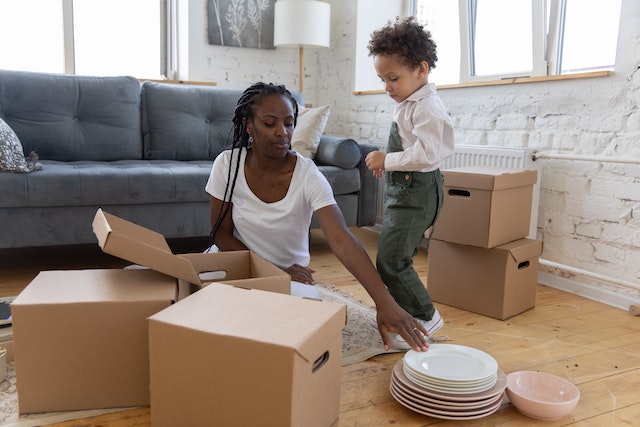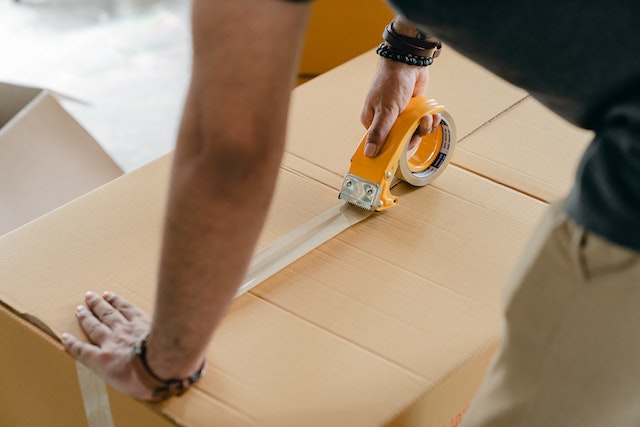The Ultimate Guide to Packing Your Kitchen for a Move
The kitchen, often heralded as the heart of the home, holds immense value, both in terms of utility and sentimental attachment. With its unique diversity, this space ranges from delicate glassware and cherished heirlooms to bulky, heavy-duty appliances. Such a variety compels a need for meticulous organization and caution. Packing your kitchen for a move isn't just tossing items into boxes. It's a strategic endeavor. Ensuring each piece is packed safely and efficiently is crucial to preserving the essence of this beloved space as you transition to your new abode.
Gathering Essential Supplies: More than Just Boxes
Gathering essential supplies extends beyond merely collecting boxes. The quality of packing materials can make a marked difference in the safety and organization of your treasured kitchen items. At the core of these essentials like bubble wrap, packing paper, robust boxes, labeling pens, and adhesive tape. But there's more to it. Specialty items, often overlooked, can be lifesavers. Dish dividers provide an extra layer of security for your plates and bowls, while plastic wraps for perishables ensure food items remain fresh and contained. These materials are the unsung heroes of a smooth-moving experience.
Declutter Before the Big Day: Lighten the Load
One of the most effective ways to stay relaxed during a move is to declutter before the big day arrives. Purging unused items lowers moving stress by streamlining what needs to be packed and lightens your load. Approach the sorting process with intention, dividing your kitchen items into categories: keep, donate, or discard. This exercise can be surprisingly therapeutic, allowing you to focus on the essentials. From an environmental standpoint, consider recycling materials like glass, plastic, and metal and composting organic waste.

Be extra careful with delicate things like glasses or plates.
Packing your kitchen for a move: Securing Your Delicate Wares
Packing breakables demands precision and care that can't be rushed. These delicate wares, including glasses, plates, and bowls, carry monetary value and memories. Materials like bubble wrap and packing paper can't be overstated. Begin by wrapping each item individually, securing cushioned glasses inside and out, while plates and bowls are interleaved with padding. Your stacking strategy in the box is equally vital; always place heavier items at the bottom, layering upwards with the lighter pieces. This approach certifies that your cherished breakables remain intact.
Securing Appliances: Making Big Items Ready
Moving appliances involves careful planning to ensure they reach your new home in perfect condition. Begin with prep, which includes cleaning and thoroughly drying each appliance from your blender to your oven. For smaller appliances, securely wrap them in bubble wrap before placing them in appropriately sized boxes filled with packing peanuts for extra cushioning. Larger appliances like fridges require special considerations; ensure they are defrosted, cleaned, and dried before the big day. You might also want to utilize moving straps or an appliance dolly for secure and easier transportation. Taking these steps will significantly mitigate the risk of damage.

When packing your kitchen for a move, seal everything attentively.
Organizing Pantry Goods: Preventing Messy Spills
Packing your kitchen for a move isn't just about dishes and appliances; your pantry goods also need careful consideration to prevent messy spills. Start by segregating perishables from non-perishables, making certain that items with limited shelf life are used up or properly stored. For liquids and other spill-prone items, seal their openings with tape and double-bag in leak-proof plastic bags. Meanwhile, dry goods like cereals or grains should be in sturdy, well-labeled boxes. With these precautions, you'll optimize space and guarantee a spill-free, organized relocation for your pantry items.
Handling Cutlery and Utensils: Streamlining the Small Stuff
It's easy to overlook the intricacies of handling cutlery and utensils, but streamlining these small items can make unpacking a breeze. Begin by bundling similar items together, using rubber bands or ties, to ensure sets remain intact. Sharp tools, especially knives, demand protective strategies; consider blade guards or wrapping them in thick paper before bundling. A handy tip to cushion and save space is using kitchen towels. Wrap delicate utensils in these towels, tucking them securely around forks, spoons, or spatulas. This dual-purpose approach warrants the protection of your utensils while putting every inch of your space to good use during relocation.

Labeling only enhances the safety of your belongings.
Labeling Mastery: Find What You Need, When You Need It
Labeling, often an underestimated step in relocating, is a true game-changer for efficiency. With clear and precise labels, you'll find what you need without unnecessary rummaging, streamlining the settling-in process. Consider adopting a color-coding system for various kitchen sections; for instance, green for pantry items, blue for dishes, and red for appliances. This visual cue expedites the process after you come to your new home, enabling you to address one category at a time. Additionally, pen down specific contents on each box. With such meticulous labeling, the unpacking process is quicker, but setting up your new kitchen space becomes more organized and less daunting.
Transportation Tips: Ensuring Safe Transit
Ensuring safe transit for your kitchen items goes beyond the packing phase; it's also about how these boxes are positioned in the moving vehicle. Heavy boxes should be at the bottom, forming a stable base for lighter ones. The fragile items should remain upright and be marked to avoid accidental mishandling. For electronic appliances, consider special precautions like using moving blankets for added protection and avoiding stacking other items on top. Secure these appliances with straps or bungee cords to prevent movement during transit. With thoughtful arrangement in the moving vehicle, you amplify the security and integrity of your treasured kitchen belongings.
Conclusion
Successfully packing your kitchen for a move is an accomplishment, but remember, the process isn't complete until you've unpacked and set up your new space. Unpacking systematically, guided by your precise labels and planning, is just as essential as the first stage. Consider layout efficiencies when arranging items, keeping accessibility and functionality in mind. By applying these strategies, what initially seems like a daunting task transforms into a smooth transition, allowing your kitchen to quickly reclaim its status as the heart of your new home.